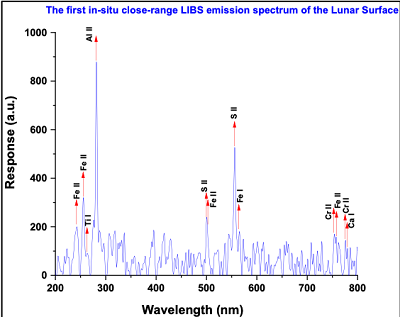Chennai, (Asian independent) India’s moon rover has found the presence of oxygen, aluminium, sulphur and other elements near the lunar south pole, the Indian Space Research Organisation (ISRO) said on Tuesday.
Investigation regarding the presence of hydrogen is underway, the Indian space agency added.
According to ISRO, the Laser-Induced Breakdown Spectroscopy (LIBS) instrument onboard Chandrayaan-3 rover has made the first-ever in-situ measurements on the elemental composition of the lunar surface near the south pole.
These in-situ measurements confirm the presence of sulphur in the region unambiguously, something that was not feasible by the instruments onboard the orbiters.
LIBS is a scientific technique that analyses the composition of materials by exposing them to intense laser pulses. A high-energy laser pulse is focused onto the surface of a material, such as a rock or soil. The laser pulse generates an extremely hot and localised plasma, and the collected plasma light is spectrally resolved and detected by detectors such as Charge Coupled Devices.
Since each element emits a characteristic set of wavelengths of light when it’s in a plasma state, the elemental composition of the material is determined. According to ISRO, preliminary analyses have unveiled the presence of aluminum (Al), sulphur (S), calcium (Ca), iron (Fe), chromium (Cr), and titanium (Ti) on the lunar surface.
Further measurements have revealed the presence of manganese (Mn), silicon (Si), and oxygen (O).
LIBS payload is developed at the Laboratory for Electro-Optics Systems (LEOS)/ISRO, Bengaluru.
India on August 23 reached the Moon with its lander safely landing on the lunar soil in a text book style. Later the rover rolled down and started doing experiments. Interestingly, India’s first moon mission found the presence of water on the moon.








